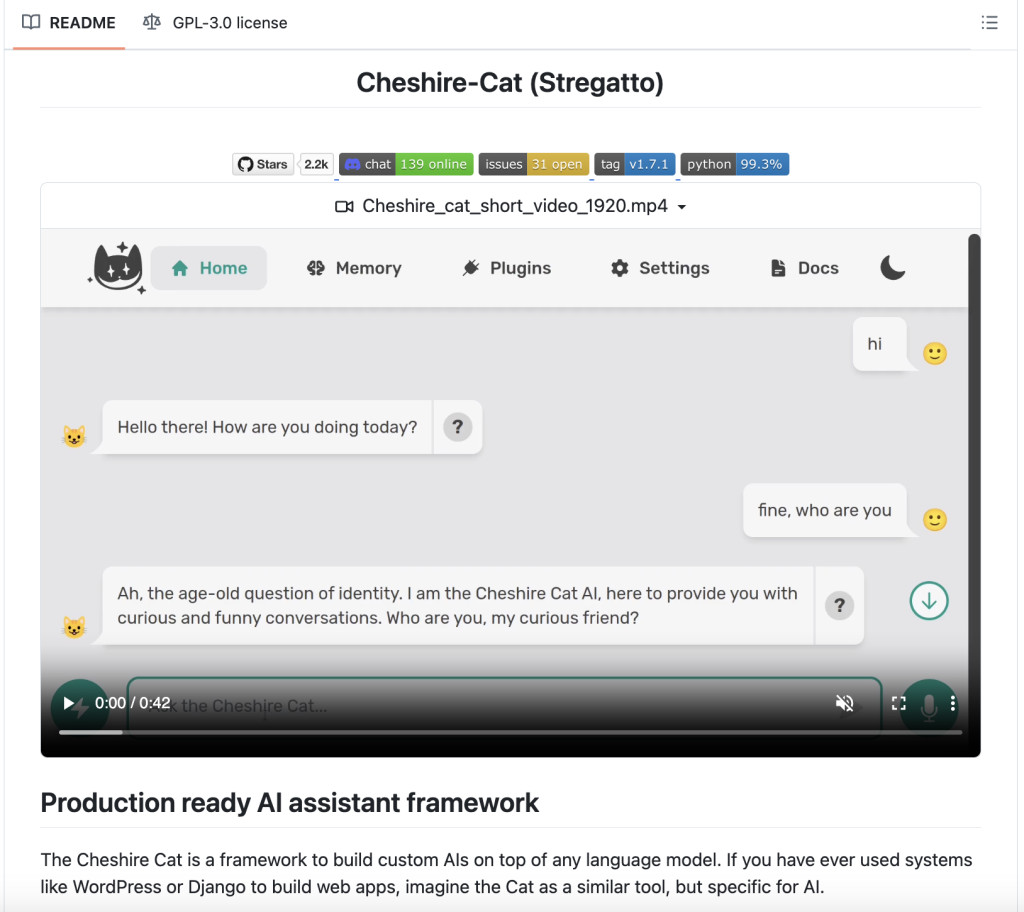Introducing Cheshire Cat, a newly developed framework designed to simplify the creation of custom AI assistants on top of any language model. Similar to how WordPress or Django serves as a tool for building web applications, Cheshire Cat offers developers a specialized environment for developing and deploying AI-driven solutions. This framework is particularly aimed at those who need a flexible, production-ready solution that integrates easily with existing systems.
This framework aims to provide an accessible platform for developers to create, customize, and manage AI assistants tailored to specific needs. The framework is fully dockerized, which ensures ease of installation and integration into various architectures. Whether interacting with external APIs, training the assistant with specific documents, or selecting the preferred language models, Cheshire Cat offers a comprehensive suite of features to streamline the AI development process.
It boasts a range of features that make it a powerful tool for AI development. Users can upload various document types, such as PDFs, text files, markdown, JSON, and web pages, to train the AI. The framework also allows seamless connection to external APIs and applications, providing broad interaction capabilities. Depending on their specific requirements, developers can choose from various commercial or open language models and embedders. Cheshire Cat’s plug-and-play nature, combined with its live reload feature, ensures that the assistant is always up-to-date and ready for deployment.
The framework supports one-click installation of plugins from a community registry, and developers can also write their own plugins. This feature allows for extensive customization, enabling the creation of highly specialized and adaptable AI assistants. The framework also supports smart dialogues, using hooks, tools (for function calling), and forms to manage complex, goal-oriented conversations.
It is a Docker-based solution that integrates easily with other components of an architecture, such as reverse proxies, vector databases, language model runners, and web applications like Django or WordPress. It features an admin panel where users can manage their installation, chat with the AI assistant, install and manage plugins, visualize memory contents, and configure language models and embedders.
In conclusion, Cheshire Cat provides a robust and flexible framework for building custom AI assistants. With its extensive feature set, ease of use, and strong community support, it is a practical tool for developers seeking to create AI solutions tailored to their specific needs.
The post Cheshire-Cat: A Python Framework to Build Custom AIs on Top of Any Language Models appeared first on MarkTechPost.
Source: Read MoreÂ



